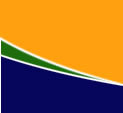Trafficking in Peru is a definite reality. It is a known fact that mafias operate within Lima, Piura, Cusco, Puno, Arequipa and many jungle towns or cities.
The main victims of human trafficking in Peru are women and minors of age who are forced to either prostitute themselves under threats of violence and death or to perform forced labor in factories, fields or mines. Amongst other forms of exploitation.they are also recruited to beg for money in the streets, to transport drugs or to sell their organs.
In Peruvian society, it is also common to find labor exploitation in the form of “domestic work” occasionally performed under conditions of poor nutrition, insignificant or absent salaries, prohibition from leaving the household or even partial imprisonment in the household.
The exact number of Peruvians in these situations is currently unknown. The official statistics with respect to trafficking are extremely low: only 14 cases since 2004. The tools, resources and organizational capacity available to the judicial authorities are extremely limited compared to those of the powerful and well organized mafias. This limits the authorities’ capacity to detect the crime, process the case and prosecute the offenders.

On 17.01.07,
Act Nº 28950 , the law against the “Trata de Personas y el Trafico Ilicito de Migrantes” (Trade of Persons and the Illicit Traffic of Migrants) came into effect. This law was passed in order to permit and facilitate the detection of human trafficking mafias, as well as to implement measures in favor of the victims, offering them protection and assistance.
This Act states that the sale of children, mendicancy (beggary), sexual and labor exploitation or organ removal are to be categorized as human trafficking crimes which can be punished with sentences of imprisonment for up to 35 years.
This law was proposed and processed by a team of public institutions, international organizations and non governmental organizations (NGOs) which jointly constituted a group named “El Grupo de Trabajo Multisectorial Permanente Contra la Trata de Personas” (The permanent multi-sector workgroup against human trafficking). On top of the legal order, the “Sistema de Registro y Estadistica del delito de Trata de personas y Afines” (RETA – Registry and Statistical system against the crime of human trafficking”), developed by CHS Alternative. It contains indicators, reports and identification related to human trafficking, and is now the official tool used by the National Police Force (Policia Nacional del Peru – PNP) to register and thwart this crime.
Human trafficking detected routes
Summary of Routes:
The routes used by traffickers are diverse but they generally start in rural areas or zones of extreme poverty and end in urban centers or zones with economic activity.

